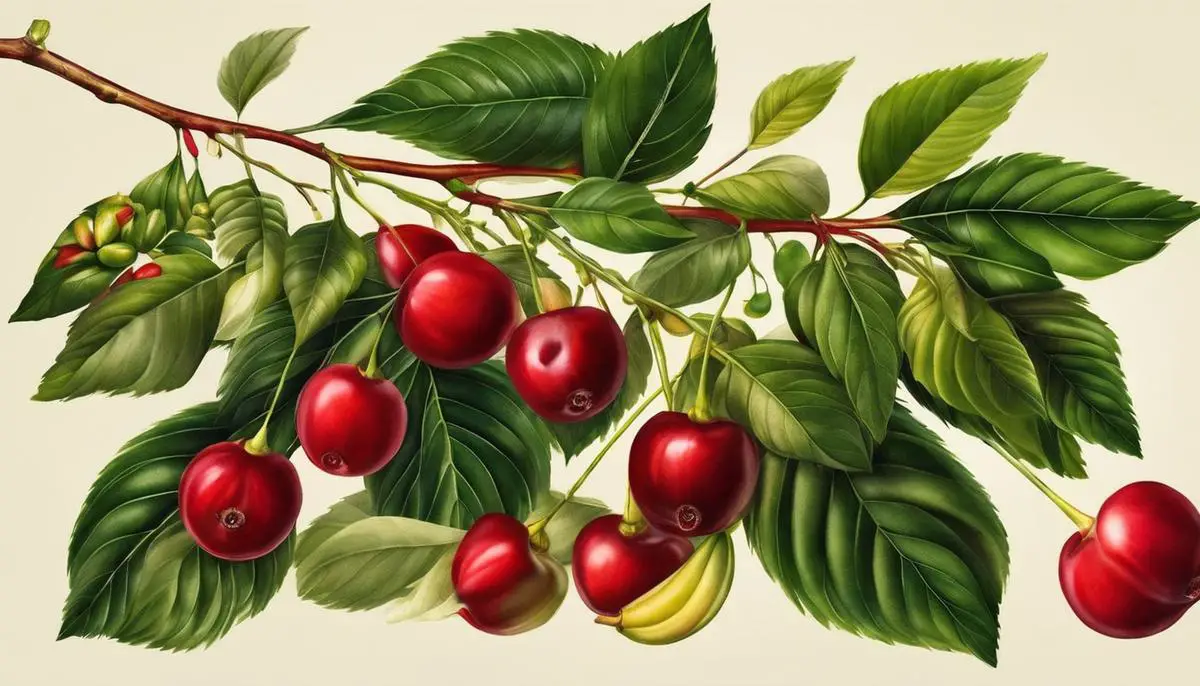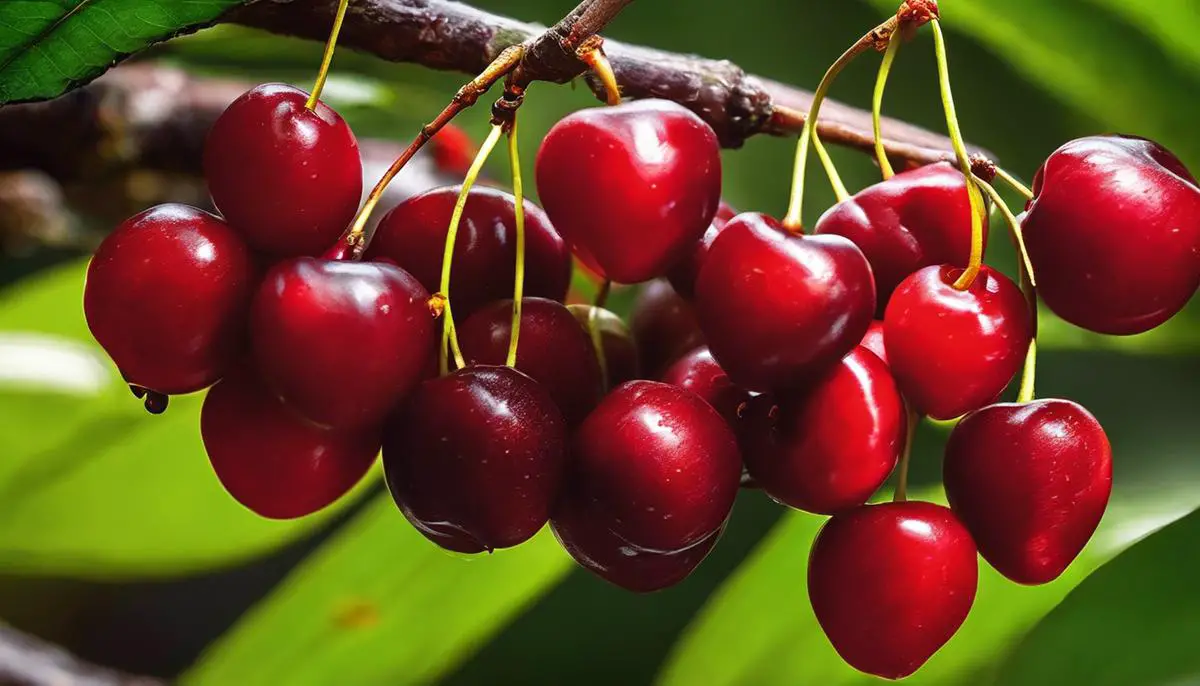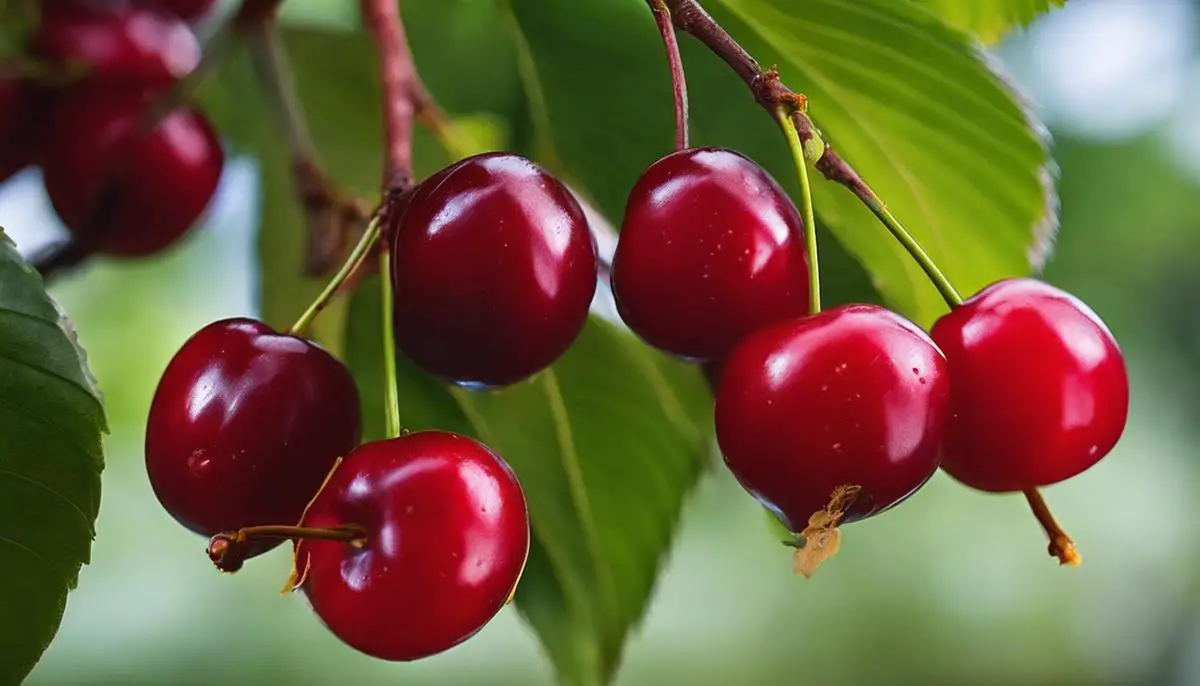
The Surinam Cherry, scientifically recognized as Eugenia uniflora, is a noteworthy fruit-bearing plant hailing from the Myrtaceae family, offering unique features that stimulate interest from botanical, ecological, nutritional, and commercial perspectives. This essay embarks on an intriguing journey to uncover the distinctiveness of this remarkable species, exploring its precise botanical identity and ecological significance, to its rich assemblage of phytochemical constituents, nutritional value and commercial viability. By unpacking these key facets of the Surinam Cherry, we establish a compelling case for its relevance in diverse contexts, such as food and nutrition, medicine, agriculture, and economics.
Botanical Identification and Classification of the Surinam Cherry
A Deep Dive into the Botanical Classification of Eugenia uniflora: The Surinam Cherry
The grand tapestry of nature presents an ever-expanding scope of exploration and discovery that humbles the scientific community on a daily basis. One such intrigue lies in the domain of Eugenia uniflora, better known in layman’s terms as, the Surinam Cherry.
Eugenia uniflora, commonly referred to as Surinam Cherry or the Brazilian Cherry, presents a fascinating exploration into the realm of botanical categorization. This captivating specimen hails from the family Myrtaceae, the myrtle family. This group, embracing over 5,500 species in nearly 140 genera, is a flourishing feature of the world’s tropical regions. The hardiness and adaptability of Surinam Cherry have led to its prevalence in subtropical and tropical regions across the globe.
Stooping to regard the plant’s taxonomy a bit closer, one will find that Eugenia uniflora is an integral member of the genus Eugenia, which currently boasts approximately 1,100 species. The large size of the Eugenia genus speaks volumes about the Earth’s biodiversity, housing a wide array of species from simple shrubs to grandiose trees.
Delving deeper into its morphology, the Surinam Cherry is recognized as a multiplication-based species, reproducing itself through seeds. This makes the study of gene diversity and phenotypic variety an intriguing endeavor.
The fruit of the Surinam Cherry is an eight-ribbed, spherical drupe, one that changes from bright green to a luscious orange or deep crimson upon ripening. Although not conventionally eaten raw due to its unique flavor profile, it bears immense value in the manufacture of jellies, wines, and liqueurs.
The leaves of the Surinam Cherry bear consideration as well – a perennial evergreen, its leaves are glossy, and lanceolate (shaped like a lance’s head) – an attribute interesting to botanists, ecologists, and horticulturists alike.
On an ecological note, the plant has a complex relationship with its environment. On one hand, it serves as a vital source of food for numerous insects and birds, thereby contributing to biodiversification. Contrastingly, its aggressive growth patterns can occasionally tip towards invasiveness, displacing native flora in some regions.
In concluding, the Surinam Cherry, an intriguing botanical specimen, offers an enlightening lens into the multitude of systematic intricacies that exist within the plant kingdom. This complexity and nuance, as seen in Eugenia uniflora, continues to challenge the scientific community while igniting our relentless curiosity for the vivacious world of botany.

Ecological Importance and Distribution of Surinam Cherry
Delving into the ecological significance of the Surinam Cherry, it is notable that Eugenia uniflora serves a critical role in various ecosystems. The plant brings about biodiversity by providing sustenance to various insects, birds, and mammals who feed on its nectar, fruit, or leaves. For pollinators, in particular, Surinam Cherry stands as a valuable resource, helping sustain populations of bees and hummingbirds.
The plant’s dense growth habit also makes it an excellent haven, offering protective cover for smaller mammals, amphibians, and many bird species. This dense foliage also offers environmental benefits like erosion control and carbon sequestration, further exhibiting its importance in maintaining ecosystem health.
However, while the plant delivers undeniable ecological benefits, it’s worth noting its potential as an invasive species. Its rapid growth, broad-ranging adaptability, and prolific seed production through its attractive fruits contribute to the plant’s potential to invade and dominate new environments quickly.
Concerning geographical range, Surinam Cherry is native to the East of South America, where it thrives in subtropical and tropical rainforests. However, due to its high adaptability, it has dispersed well beyond its native habitation, colonising territories as far-flung as Africa, Southeast Asia, the Caribbean, and the South Pacific. Indeed, in parts of Australia, California, and Florida, it is recognised as an invasive, troublesome plant due to its unchecked proliferation.
In the United States, its cultivation remains primarily in the USDA Plant Hardiness Zones 9b through 11. These regions offer the warmth and moisture the plant needs to survive and flourish. Furthermore, the Surinam Cherry is tolerant of a variety of soil types, enhancing its suitability for cultivation across a broad range of environmental conditions.
The study of plants like the Surinam Cherry, each with their unique intricacies and complexities, unlocks the potential of understanding the world’s biodiversity better. This knowledge benefits not just science, but future generations that might come to more fully appreciate the delicate balance of our ecosystems and humanity’s role in their preservation.

Phytochemical Components and Nutritional Value of Surinam Cherry
Phytochemicals and Nutritional Advantages of Surinam Cherries
Delving into the botanical marvels of Eugenia uniflora, the Surinam cherry, it becomes essential to highlight the unique phytochemical composition and nutritional advantages of this intriguing fruit. These cherries, native to South America but enjoyed worldwide, are not only a delightful delicacy, but an excellent source of vitamins, minerals, and potent bioactive compounds, known as phytochemicals.
Anthocyanins, a group of water-soluble pigments that give Surinam Cherry its vibrant red color, are found in abundance in this fruit. These phytochemicals act as powerful antioxidants, combating oxidative damage within our bodies. They are also known for their cardiovascular benefits, owing to their ability to modulate cholesterol levels and prevent blood clots.
Next, we come across beta-carotene, a spectacular source of vitamin A which is well represented in Surinam Cherries. Essential for eye health, beta-carotene improves night vision and helps maintain healthy skin. It’s worth noting that vitamin A has a protective role against numerous types of cancers.
An impressive phytochemical present in these cherries is quercetin, a flavonoid with antioxidant, anti-inflammation, and antiviral properties. Flavonoids, in fact, are renowned for their wide-ranging health benefits including the reduction of cardiovascular diseases and some types of cancer.
The exploration into the phytochemistry realm of Surinam cherries would be incomplete without a nod to the abundant vitamin C. Ascorbic acid, as it’s scientifically known, is instrumental in boosting immunity, promoting collagen formation, and increasing the body’s iron absorption. Plus, it’s a powerful antioxidant providing protection against oxidative stress.
The presence of important minerals like magnesium, potassium, and calcium in Surinam cherries shouldn’t be overlooked. They play crucial roles, respectively, in enzymatic reactions, maintaining electrochemical gradients in body cells, and supporting skeletal and cardiovascular health.
Beyond its list of phytochemicals, it’s important to note that the Surinam cherry is low in calories, making it a guilt-free snack choice. Plus, it’s a rich source of dietary fiber that promotes digestive health, contributing to a sensation of fullness, thus aiding weight management.
Finally, as we uncover the nutritional treasure trove that is the Surinam cherry, it seems pertinent to accentuate its healing potential in traditional medicine. Folk use of Surinam cherry, harnessed the anti-inflammatory, antibacterial and antifungal properties of its essential oils in treating a myriad of ailments such as dermatitis, gastrointestinal disorders, and fever reduction.
In essence, the Surinam cherry epitomizes a scientific paradox: a delicious snack serving up a nutritional powerhouse of phytochemicals, ready for our bodies to exploit. This easily obtainable fruit delivers a profound demonstration of nature’s capacity to nourish and heal, offering researchers an exciting path to explore in terms of potential therapeutic uses. The Surinam cherry does more than satiate our tastes; it opens up a fascinating nutritional spectacle, inviting us to delve deeper into the magic of botanical science.

Cultivation Practices and Commercial Value of Surinam Cherry
Seamlessly melding into the previous discourse, the cultivation of Eugenia uniflora, or the Surinam Cherry, demands our focused attention. An enchanting specimen of flora, its cultivation touches on both science and art, imposing a balance. Managed in two primary ways, it is either grown from seeds, or by grafting onto rootstocks of the same family, with the latter being significantly more successful in terms of fruit-bearing efficacy.
Seeds require a warm and moist environment to germinate, usually sprouting within a month of sowing. In order to expedite this process and ensure optimum germination rates, pretreatment such as scarification and stratification is highly recommended. Somewhat more challenging, the grafting process calls for more intricate knowledge and care. Generally, the most successful results have been observed with the side-veneer grafting method during late winter or early spring.
Planting sites have to be chosen with care as well, demonstrating thoughtful design embellished with scientific understanding. These deciduous trees refrain from shallow, rocky soils, finding the richness of well-drained, sandy or loamy soil more preferable for their growth. Optimal growth is typically observed in full sunlight, although the Surinam cherry can tolerate shade. As for the plant’s water requirements, while it is fairly drought-tolerant when mature, young plants thrive on regular watering.
A versatile entity, the Surinam cherry transcends its horticultural confines to attain commercial applications. The tart and resinous berries are harvested, principally for personal consumption; however, its commercial potential, albeit largely unexplored, ventures into realms apart from the gastronomic. Extracts from the leaves and fruit have demonstrated antibacterial, antifungal and antioxidant activity, rooted in traditional medicine. Furthermore, the high pectin content of the fruit fattens the prospect of jelly and jam production, extending possibilities for commercial usage.
The economic potential can be extrapolated from its use as an ornamental plant in subtropical and tropical regions due to its natural beauty, hardiness, and striking, dark red fruit. An inclusion in landscaped gardens and public spaces only extends its commercial value.
Notably, the Surinam cherry’s genetic diversity facilitates hybridization studies, providing valuable insights in plant breeding and genetics. This benefits the fruit industry significantly, offering potential for developing new, disease-resistant and climate-tolerant varieties.
In a nutshell, the cultivation and commercial employability of the Surinam cherry, is a delicate blend of experiential knowledge, scientific understanding, and market potential.

Driven by explorations across different fronts – botanical, ecological, nutritional, and commercial, we have established an understanding of the Surinam Cherry that reaches beyond its enticing fruit. While reinforcing its relatively well-known features, we have also shed light on its lesser-known yet significant facets, bringing to focus the plant’s remarkable resilience, adaptability, and versatility. Going forward, the importance of this plant species within not just ecological cycles, but also in fields like nutrition, health research, agriculture and commerce cannot be underestimated. Embracing such holistic insight about this fascinating species unleashes opportunities for maximizing its benefits and potential, contributing to a more sustainable future.



